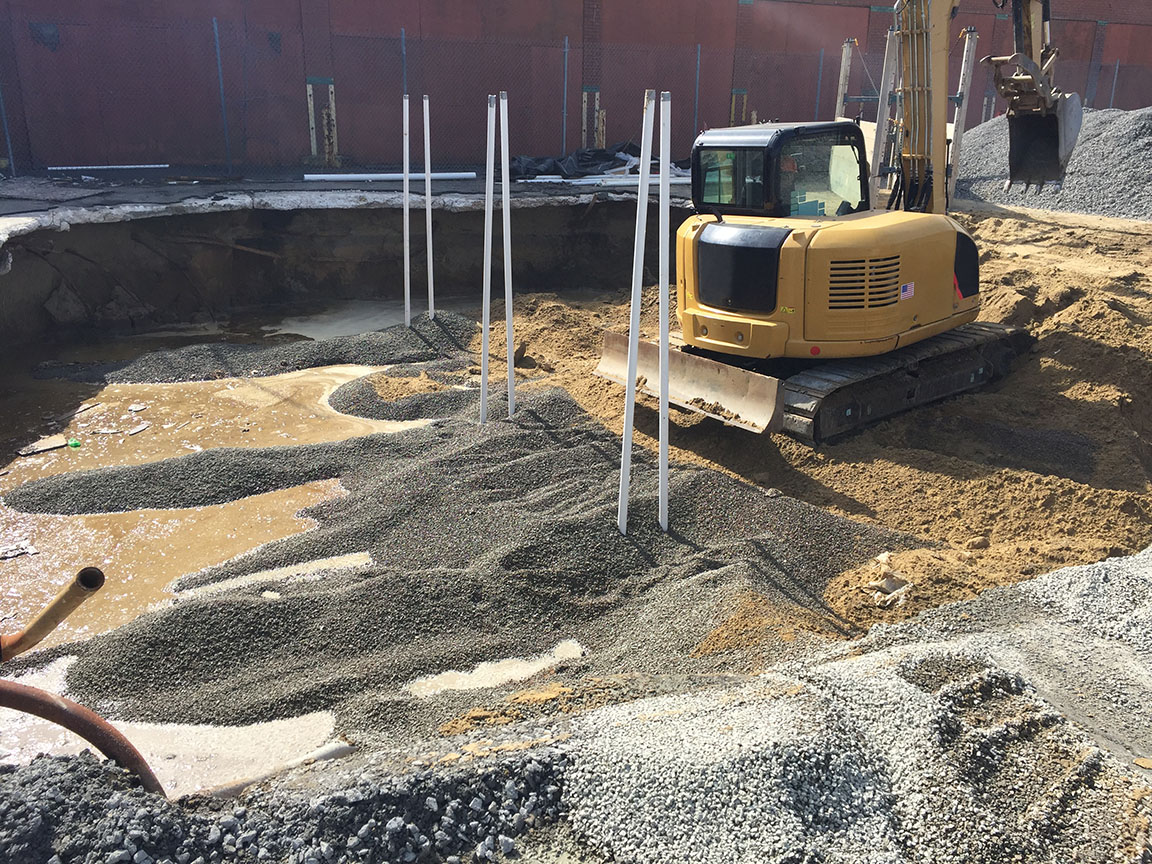Using Rare Earth Elements to Assess Groundwater Remediation Efforts
Remediation is a term used to describe the processes through which hazardous materials or wastes (such as gasoline) and contaminants (like cleaning solvents and metals) are destroyed or removed from underground soil, groundwater, or sediment systems. The two main categorizations of remediation techniques fall under the bucket terms “ex-situ” and “in-situ,” which entail excavating or removing a part of the system—for instance unearthing contaminated soil—to treat it off site and implementing treatment protocols without otherwise moving or changing the system (thus leaving the system in place), respectively.
The invasive nature of ex-situ remediation techniques allows for a more detailed understanding of the extent of the contamination, and thus, remedial efforts are generally more uniform and short-lived. However, ex-situ techniques are inherently more expensive, as they require more equipment and labor costs, and excavation processes might require the acquisition of permits from local or state authorities. On the other hand, in-situ techniques tend to be cheaper, but the timeline of remediation is longer and the uniformity of treatment is not guaranteed, as the remediators have less control over the system.
What Are Permeable Reactive Barriers?
A permeable reactive barrier (PRB) is an in-situ remediation technique that involves placing a permeable barrier—comprised of materials such as limestone, carbon, or iron metal—in a linear arrangement perpendicular to and downgradient from the area of contaminated groundwater. The PRB either traps hazardous materials or reacts with them to decrease concentrations of harmful contaminants downgradient. One of the issues with PRBs is that they must be placed as close to perpendicular to a groundwater flow as possible to achieve optimal remediation, which is difficult to accomplish for a system with limited access. Another limitation is the depth to groundwater, as the PRB must extend below the most contaminated section of the groundwater.
To combat this, researchers have developed a method for confirming the success of PRBs via rare earth element (REE) detection.
How Can Rare Earth Elements Be Used in Remediation Efforts?
REEs (such as lanthanum, cerium, and neodymium) naturally occur in the subsurface worldwide, and can therefore be used as geochemical tracers to determine the effectiveness of a PRB: if a sample contains drastically lower levels of REEs downstream from the PRB, this is a sign that the PRB is effective, as the REEs have either been trapped by or reacted with the PRB. This analysis helps reduce the timeline of in-situ remediation operations, and also further diminishes expenditures or, more aptly, the costs of a sub-optimal operation.
There are other interesting applications of REE detection being studied: “EPA has also started applying [REE detection] to characterize mining wastes, like coal ash and acid mine drainage, to understand the potential for extraction—and possible reuse—of rare earth elements and other critical minerals from these waste products … The successful recovery of critical rare earth metals could reduce the environmental impact of mine wastes, while providing economic benefits to affected communities” (EPA).
If you have questions about your groundwater remediation efforts, or would like a second opinion on the effectiveness of an operating system, call Walden today. Our environmental engineers and scientists have many years of experience providing site investigation and remediation services to clients, and we can help you too. Contact Walden at 516-559-6976.

Dealing with environmental remediation challenges? Contact Walden’s experienced consultants at 516-559-6976 to discuss!
